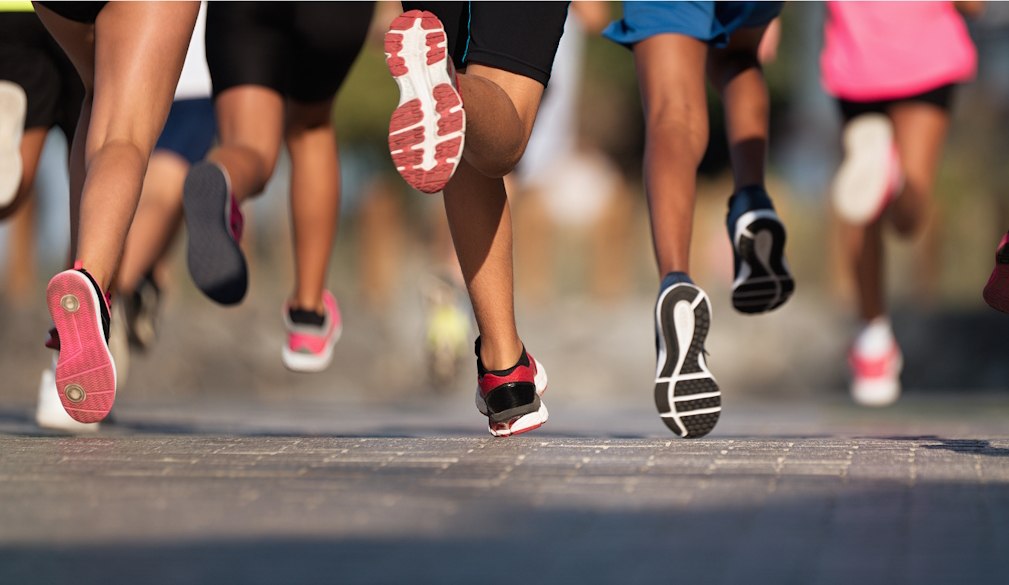Are running shoes getting too good? Why ‘technological doping’ is a growing concern for professional sports
- Written by Shayne Vial, Lecturer in Biomechanics, Edith Cowan University

Every four years, the best athletes from around the globe converge to battle it out for top honours at the Olympic Games. Athletes go through the rigours of qualification, competing through injury and travel fatigue, with a wide variety of weather conditions, in order to secure their spot on the team.
Every millisecond or centimetre counts when it comes to getting on the podium or not at all, which means athletes and coaches are looking for any possible advantage over their competition.
As technology evolves, it pervades into all aspects of our lives. The sporting world is no exception.
But where do we draw the line when technological advances used in sports cross over into performance enhancement, sometimes referred to as “technological doping”?
What is technological doping?
Technological doping loosely refers to instances when technology enhances an athlete’s performance beyond their natural capabilities, potentially giving them an unfair advantage over other competitors.
In 2008, athletes wearing Speedo LZR Racer hi-tech swimsuits developed in collaboration with NASA broke an unprecedented 13 world records[1]. The suits were swiftly banned[2] from professional competition.
However, it’s not easy to decide whether something is a natural technological advancement in a particular sport (such as carbon fibre canoes used in kayak sprint), or something that genuinely improves an athlete’s performance beyond their capabilities.
Suspecting placebo
Currently, around 500 million people across the world are wearing some form of wearable technology (such as a smart watch or ring). Many of us like this type of tech because it provides objective data related to our health or performance – how many steps we’ve walked, the number of hours slept, calories burned and so on.
Now, think about a high-level athlete and coach working together to prepare for the Olympics. Planning and preparation begins far in advance. During this time, they will be using a variety of objective measures to track and monitor their performance.
For example, a sprinter might measure ground contact time during maximum velocity efforts using smart insoles. Ground contact time and air times (when no foot is in contact with the ground) are similar measures to stride length and frequency, which determine how fast we can run[3]:
stride length x stride frequency = running speed
Let’s say a new running shoe prototype has been given to the athlete to try out. During one of these maximum velocity efforts, their data show ground contact time has decreased while running speed has increased. In other words, the athlete ran faster. Is it the shoe? Is it placebo?
Unfortunately, that question is not an easy one to answer.
How can we check for technological doping?
Firstly, we have to look at the materials and components used to construct the shoe to see if there’s anything beyond the usual capabilities for the intended purpose. (For example, having a loaded spring mechanism that propels the athlete forward with each step.)
Once that has been given the all clear, scientists in biomechanics laboratories would then design an experiment to test the shoe against other shoes typically used by other competitors.
However, even if the shoe does perform better in the experiment than all the other shoes, it doesn’t mean it will be banned from competition.
For example, in October 2019, Kenyan runner Eliud Kipchoge broke the two-hour marathon record[4]. The shoes Kipchoge wore – Nike Vaporflys – contain a thin carbon fibre plate integrated within a midsole composed of highly compressible, resilient and flexible plastic.
Researchers found[5] Vaporflys did perform better than other shoes they tested, but couldn’t provide any biomechanical explanation as to why.
They concluded the shoe itself improves running economy, but some people seemed to perform better than others – and it was linked to specific foot fall patterns. This indicates the shoe may not uniformly improve all runners to the same level.
Taking into account these advances in shoe design, World Athletics have introduced some regulations to ensure fairness. These include:
- a maximum allowable stack height (the distance between the foot and the ground) of 40mm for road racing shoes
- shoes can only contain one carbon fibre plate or similar material
- shoes must be available for purchase by the general public for at least four months before being used in competition.
Can we make it fair?
When it comes to technological doping, the major ethical issue we need to address is inequality.
If one athlete can have a performance gain over another due purely to wearable technology (which not everyone can afford), we run the risk of demeaning the true nature of sport. Affordability and accessibility should not be overlooked. Technological advancements should benefit the sport as a whole, not just individual gain.
To address this, all regulatory bodies, such as World Athletics and World Aquatics, need expert input to enable accurate classification of wearable technology. Many bodies already do this.
Additionally, we should conduct regular testing in biomechanical labs to evaluate the impact new technologies have on performance. This would work towards ensuring that advancements do not unfairly enhance athletic abilities.
By combining expert insights and rigorous testing, we can maintain a level playing field and preserve the integrity of competitive sports.
References
- ^ broke an unprecedented 13 world records (spinoff.nasa.gov)
- ^ were swiftly banned (www.swimmingworldmagazine.com)
- ^ how fast we can run (www.sciencedirect.com)
- ^ broke the two-hour marathon record (www.theguardian.com)
- ^ Researchers found (www.tandfonline.com)














